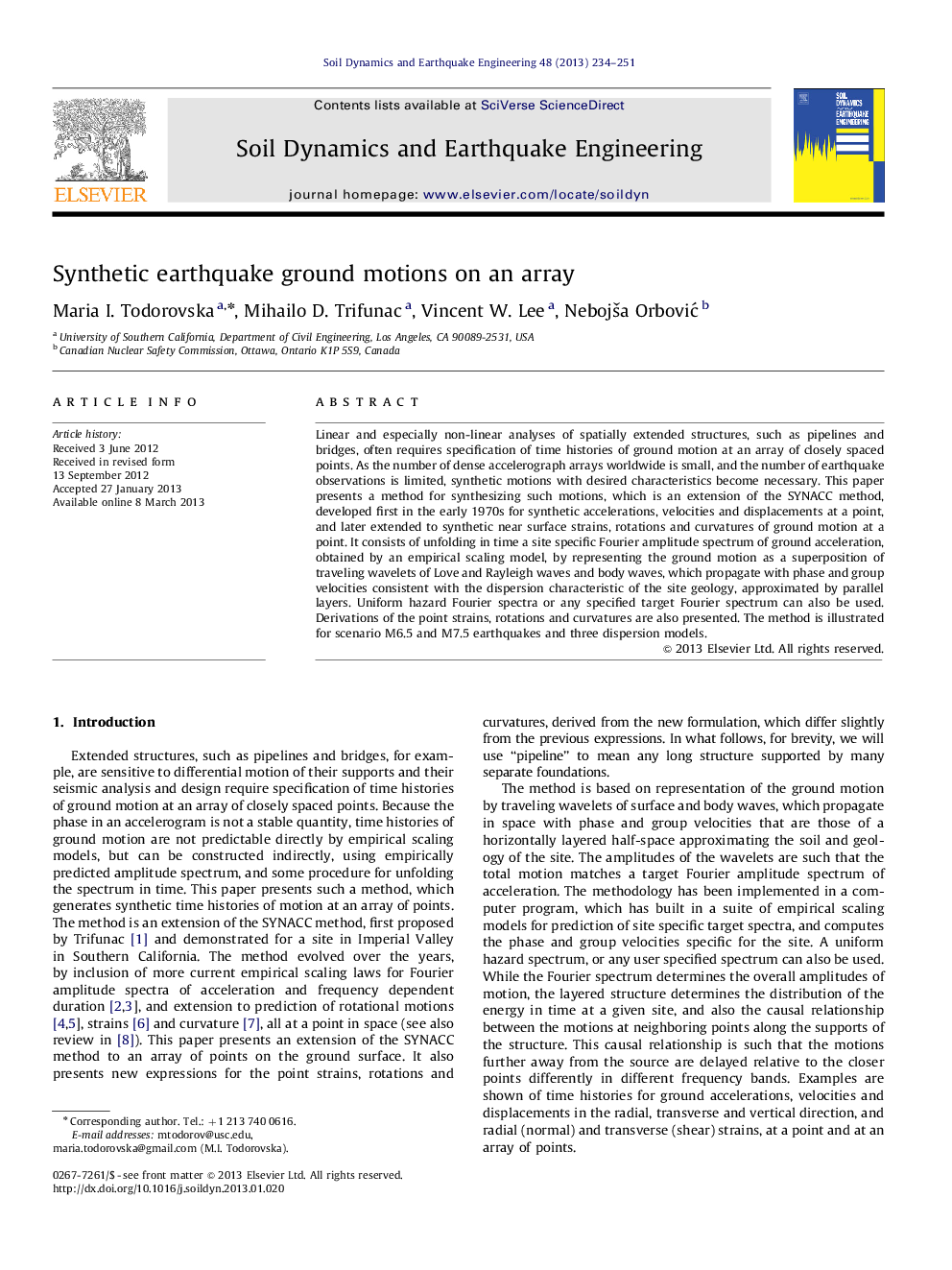| Article ID | Journal | Published Year | Pages | File Type |
|---|---|---|---|---|
| 304302 | Soil Dynamics and Earthquake Engineering | 2013 | 18 Pages |
Linear and especially non-linear analyses of spatially extended structures, such as pipelines and bridges, often requires specification of time histories of ground motion at an array of closely spaced points. As the number of dense accelerograph arrays worldwide is small, and the number of earthquake observations is limited, synthetic motions with desired characteristics become necessary. This paper presents a method for synthesizing such motions, which is an extension of the SYNACC method, developed first in the early 1970s for synthetic accelerations, velocities and displacements at a point, and later extended to synthetic near surface strains, rotations and curvatures of ground motion at a point. It consists of unfolding in time a site specific Fourier amplitude spectrum of ground acceleration, obtained by an empirical scaling model, by representing the ground motion as a superposition of traveling wavelets of Love and Rayleigh waves and body waves, which propagate with phase and group velocities consistent with the dispersion characteristic of the site geology, approximated by parallel layers. Uniform hazard Fourier spectra or any specified target Fourier spectrum can also be used. Derivations of the point strains, rotations and curvatures are also presented. The method is illustrated for scenario M6.5 and M7.5 earthquakes and three dispersion models.
► Method for synthesis of earthquake ground motion: empirical–physical model based approach. ► Representation as superposition of traveling wavelets of surface and body waves. ► Synthetic accelerations, velocities, displacements, near surface strains, rotations. ► Output: motions at a point and at an array of points at closely spaced distances. ► Extension of SYNACC method to array of points.
